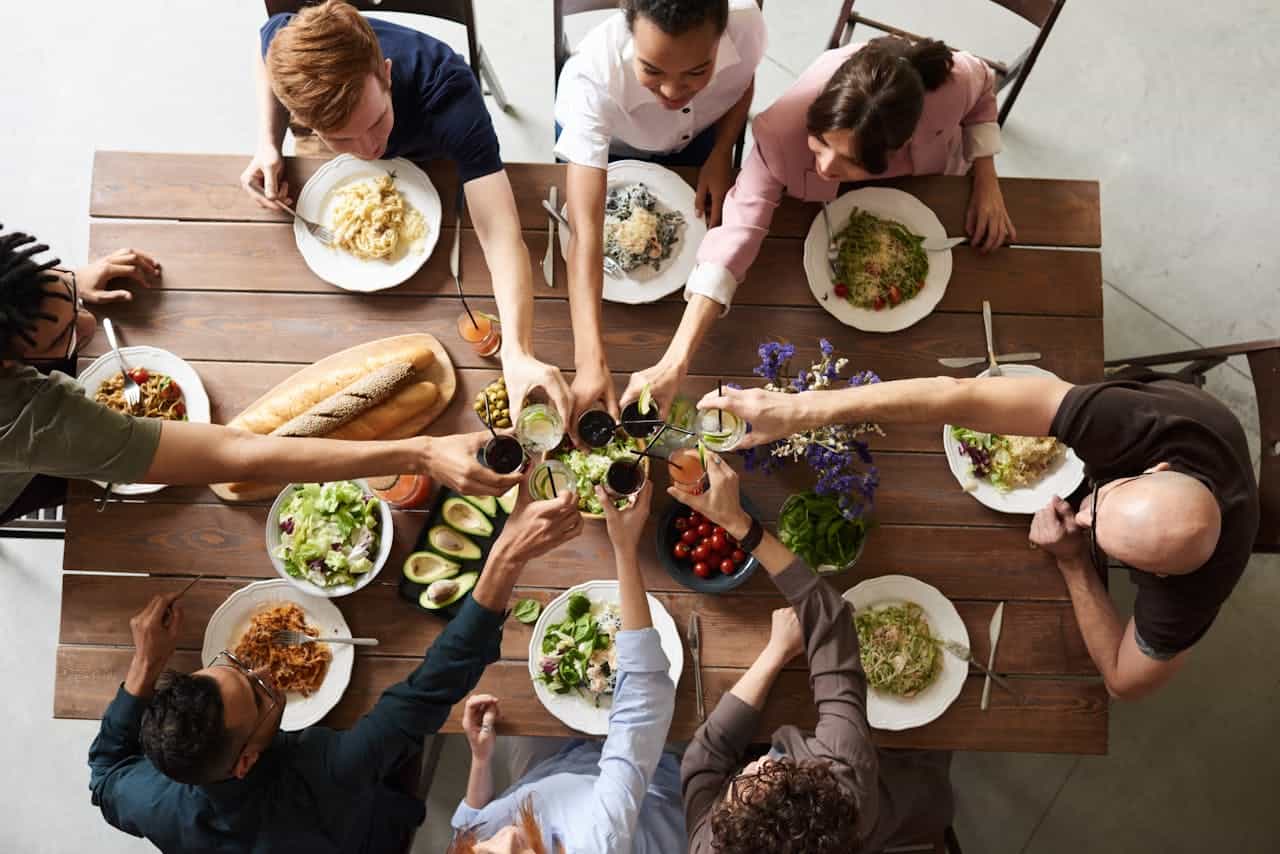
By Jermaine Thomas January 20, 2025
In the process of organizing unforgettable events, catering frequently takes on an essential role. However, beneath every tasty meal and beverage is a more profound comprehension of flavor science. Let’s examine how catering methods enhance guest experiences by blending flavor, presentation, and service into an unforgettable masterpiece.
What is Flavor Science?
Flavor science is more than just taste; it’s a complex interaction between taste, smell, texture, and even sound. Every bite is a multisensory experience that combines these elements to deliver satisfaction. Understanding how flavor works allows caterers to craft meals that appeal to the senses and leave a lasting impression.
Taste—the most recognized component—is only a fraction of the story. Humans perceive five basic tastes: sweet, salty, sour, bitter, and umami. However, smell contributes significantly, with aromatic compounds reaching olfactory receptors and creating nuanced perceptions of flavor. For example, the smoky aroma of grilled meats enhances their savory appeal.
The texture should also not be overlooked. Crispy, smooth, or stretchy textures enhance the overall pleasure of eating. A well-crafted pastry, featuring its crisp crust and tender filling, illustrates how differing textures can enhance a dish. Furthermore, sound, like the crunch of a freshly baked bread roll, contributes an additional layer.
For caterers, utilizing the concepts of flavor science entails more than just adhering to recipes. It necessitates comprehension of the interactions between ingredients and their perceived qualities. This understanding is crucial for improving the guest experience.

The Role of Catering in Enhancing Guest Experience
Catering is not just about feeding people; it’s about creating an experience. Guests remember events where every detail, from the food to the ambiance, contributes to their enjoyment. Catering bridges the gap between flavor and emotion, making food a centerpiece of the experience.
A great caterer doesn’t just serve food; they curate a sensory journey. This starts with visual appeal. Studies have shown that presentation influences perception. A dish that looks appealing triggers anticipation, making it more enjoyable even before the first bite. Think of a beautifully plated dessert where every element is artfully arranged.
The emotional bond with food also has an impact. Nostalgia serves as a potent instrument. A thoughtfully crafted meal that brings back childhood nostalgia or cultural connections can create a memorable impact. For example, providing a contemporary take on traditional comfort dishes, such as truffle mac and cheese, can generate a blend of innovation and recognition.
Assistance is another crucial component. Friendly, skilled team members improve the dining experience. By describing meals and swiftly responding to guests’ requests, the personal touch enhances the overall environment. Along with skillfully prepared dishes, these components unite to produce unforgettable occasions.
Catering Techniques That Leverage Flavor Science
Professional caterers often employ innovative techniques to maximize flavor and guest satisfaction. These methods are rooted in an understanding of how to manipulate and highlight sensory elements.
Balancing Flavor Profiles
Achieving balance is critical in any dish. A well-balanced dish combines sweet, sour, salty, bitter, and umami elements to create a harmonious taste. For example, vinaigrettes achieve this by blending the acidity of vinegar with the sweetness of honey and the richness of olive oil.
Caterers also take contrast into account. A zesty citrus sorbet offered between courses refreshes the palate and readies diners for the following dish. This method not only rejuvenates but also emphasizes the unique tastes of the next dish.
Using Fresh and Seasonal Ingredients
Fresh ingredients often have more vibrant flavors, and seasonal produce is at its peak in terms of taste and nutritional value. A summer event might feature juicy watermelon salads, while autumn menus highlight hearty root vegetables and spices.
Additionally, sourcing local ingredients supports sustainability and connects guests to the region’s culinary identity. Guests appreciate knowing that the food they’re enjoying is fresh and thoughtfully sourced.
Experimenting with Textures
The interplay of textures adds excitement to a dish. Caterers might pair crunchy elements, like toasted nuts, with soft purées or creamy sauces to create contrast. Techniques such as sous vide cooking, which uses precise temperature control, ensure tenderness while preserving flavor and moisture.
Adding layers of texture also improves desserts. A multi-layered parfait featuring rich yogurt, crunchy granola, and fresh fruit delights the taste buds in several ways, making it an unforgettable indulgence.
How Psychology Influences Flavor Perception
The way guests perceive flavor isn’t just about the food itself; psychology plays a significant role. For example, the environment in which food is served can alter its taste. A well-lit, elegantly decorated space can make dishes feel more sophisticated and enjoyable.
Color is yet another subtle factor. Studies indicate that individuals link particular colors to distinct flavors. For example, red is frequently associated with sweetness, whereas green is tied to freshness. Caterers apply this understanding to create dishes and locations that enhance the sensory experience.
Music and soundscapes also affect perception. Soft background music or the pleasant hum of conversation creates a welcoming atmosphere. Even the type of cutlery used can make a difference—heavier utensils give a sense of luxury, enhancing the perceived quality of the meal.
Trends in Catering and Flavor Enhancement
Modern catering trends emphasize creativity and sustainability. Caterers are exploring global cuisines, incorporating bold flavors and fusion techniques to surprise and delight guests. From Korean tacos to Indian-inspired sliders, these innovations introduce diners to new and exciting tastes.
Sustainability is another important focus. Numerous caterers are minimizing food waste by using the entire ingredient, for instance, creating broth from vegetable remnants. Moreover, plant-based menus are gaining popularity, providing meals that are both tasty and eco-friendly.
Interactive dining experiences are gaining traction, too. Live cooking stations, where chefs prepare meals in front of guests, add an element of entertainment. These setups also allow guests to customize their meals, ensuring their preferences are met.
Elevating Guest Experience Through Personalization
Personalization is a growing trend in the catering industry. Offering customized menus or incorporating guest preferences adds a personal touch that makes events feel special. For instance, providing options for dietary restrictions, such as gluten-free or vegan dishes, ensures inclusivity.
Interactive elements, like build-your-own taco bars or dessert stations, allow guests to participate in the dining experience. This engagement fosters a sense of connection and enjoyment. Caterers who adapt their offerings to reflect the tastes and values of their audience create unforgettable events.
Cultural inclusivity is also significant. Customizing menus to showcase the cultural heritage of participants can promote a feeling of inclusion. Whether via regional cuisines or the use of varied cooking methods, catering serves as a link that unites individuals through taste.

The Future of Catering and Flavor Science
The catering industry is continuously evolving, with advancements in technology and flavor science shaping its future. Techniques like molecular gastronomy—using scientific methods to create innovative dishes—are gaining popularity. Think of edible bubbles that burst with flavor or foams that add a visual and textural element.
AI and data analysis are also entering the catering industry. By reviewing guest opinions and likes, caterers can adjust menus to suit particular flavors. These tools allow for accuracy and innovation in crafting culinary experiences.
Virtual and augmented reality are beginning to intersect with catering. Imagine a dining setup where guests can visually explore the origin of their food through AR glasses, adding an educational and interactive layer to the experience.
Conclusion
Catering is more than just delivering food; it’s an art and a science that transforms meals into memorable experiences. By leveraging the principles of flavor science, caterers craft dishes that delight the senses and create emotional connections. Through thoughtful presentation, innovative techniques, and an understanding of guest psychology, catering becomes a powerful tool for enhancing events.
As the sector keeps expanding and evolving, the science of taste will stay at its core, influencing how we commemorate, bond, and savor food collectively. Regardless of whether it’s a wedding, corporate function, or family get-together, an appropriate focus on flavor can transform a typical meal into an exceptional experience.